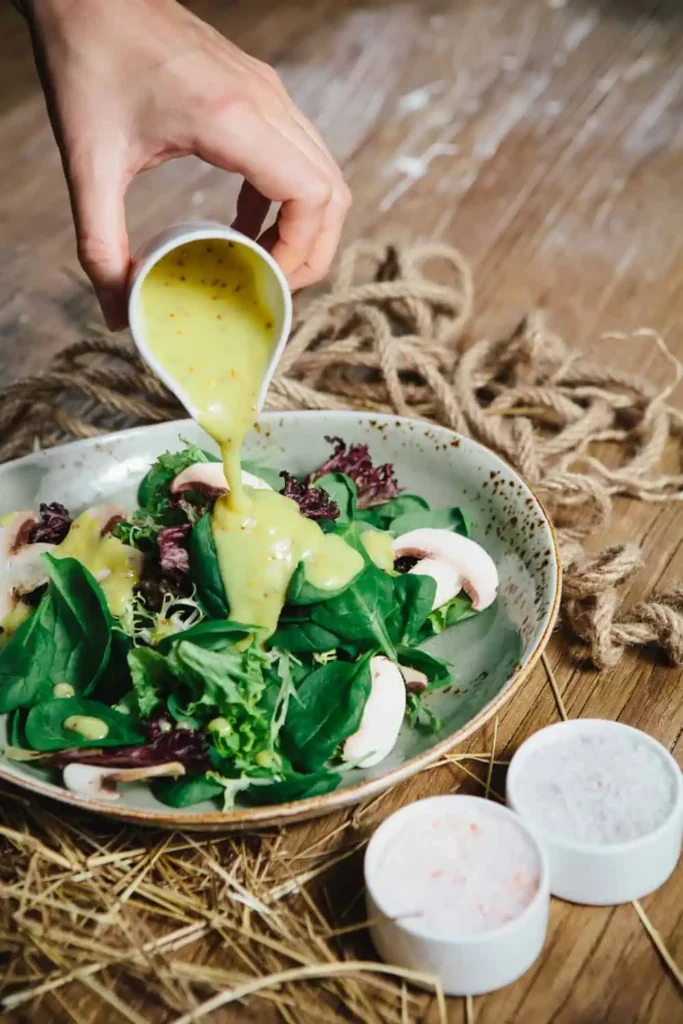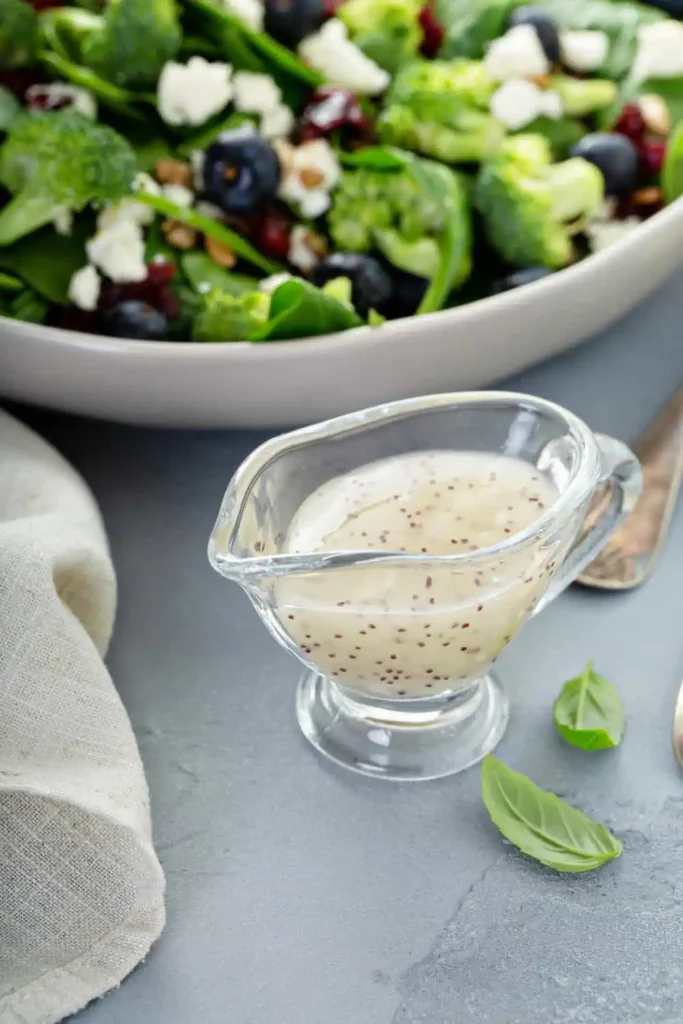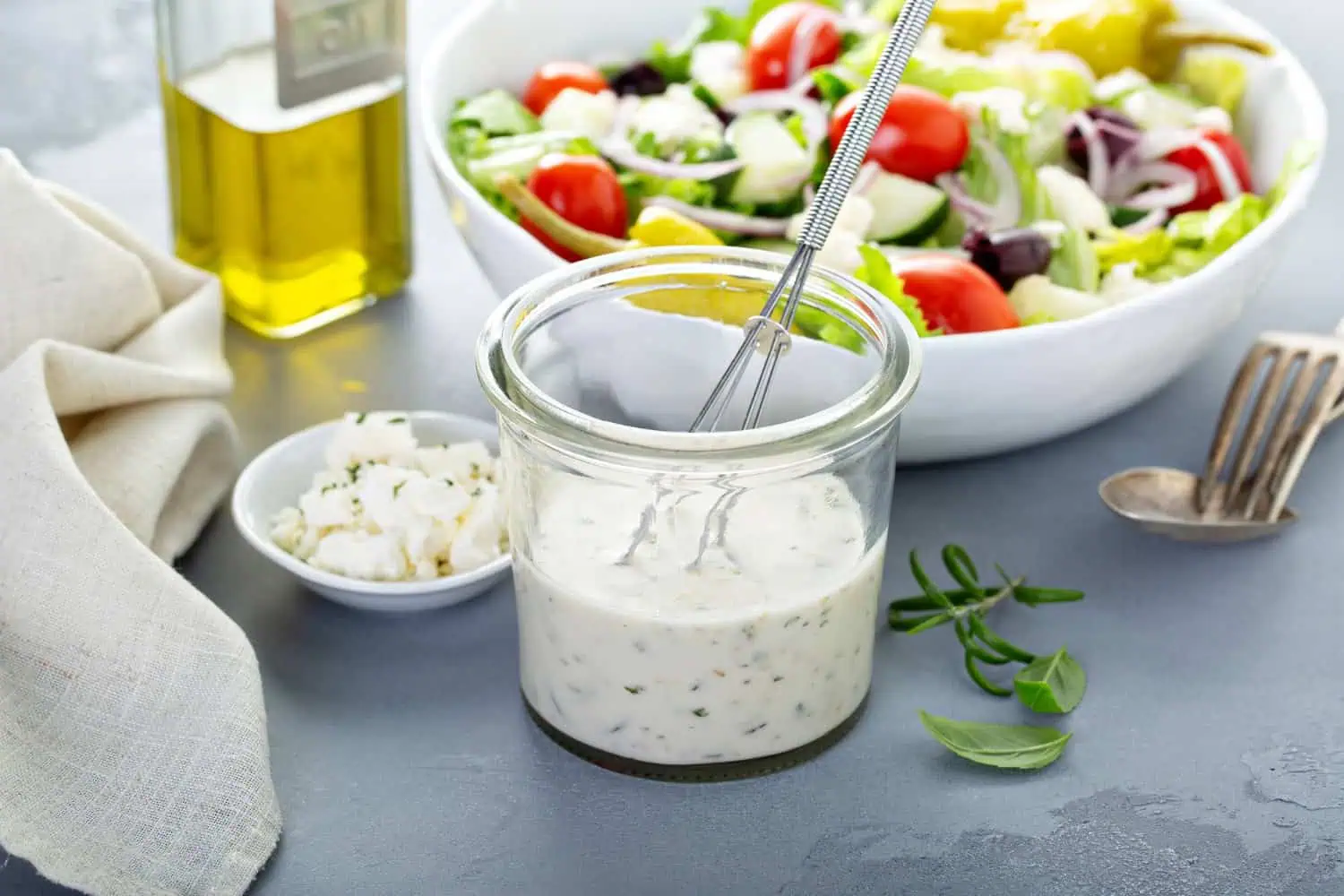Salads are a staple in many diets, offering a healthy, versatile, and delicious way to enjoy fresh vegetables, fruits, and proteins. But let’s be honest—what truly makes a salad shine is the dressing. Whether you prefer creamy, tangy, or zesty flavors, the right dressing can elevate a simple bowl of greens into a gourmet experience. This brings us to the big question: What is the number 1 salad dressing?
The answer to this question isn’t as straightforward as it seems. While ranch dressing often tops the charts in popularity, other contenders like Italian dressing, Caesar dressing, and balsamic vinaigrette have their own loyal followings. In this article, we’ll explore the world of salad dressings in detail, diving into their flavors, uses, nutritional profiles, cultural significance, and more. By the end, you’ll have a clear understanding of what makes a salad dressing truly exceptional—and which one might be your personal favorite.
Why Salad Dressings Matter
A salad without dressing is like a symphony without music—it’s missing the element that ties everything together. Salad dressings add flavor, texture, and even nutritional benefits to your meal. They can transform a bland mix of greens into a vibrant, satisfying dish.
But beyond taste, dressings also play a crucial role in helping your body absorb fat-soluble vitamins like A, D, E, and K, which are found in many vegetables. Without a source of fat, your body may struggle to absorb these essential nutrients. This is why even a light drizzle of olive oil or a vinaigrette can make a big difference in the nutritional value of your salad.
Moreover, salad dressings are incredibly versatile. They’re not just for salads—they can be used as marinades, dips, or even sauces for roasted vegetables and proteins. This versatility is one of the reasons why certain dressings, like ranch and Italian, have become household staples.
A Brief History of Salad Dressings
Salad dressings have been around for centuries, with their origins tracing back to ancient civilizations. The concept of enhancing raw vegetables with oils, vinegars, and spices dates back to the Egyptians, who used oil and vinegar to flavor their greens. The Greeks and Romans also embraced the idea, adding herbs and fermented fish sauces to their salads.
In the Middle Ages, salad dressings became more elaborate, with the addition of mustard, honey, and other ingredients. By the 19th century, French cuisine had popularized vinaigrettes, which remain a classic choice to this day.
In the United States, the salad dressing industry took off in the early 20th century, with the invention of bottled dressings like ranch and Thousand Island. Today, salad dressings are a global phenomenon, with each culture adding its own unique twist.
What Makes a Salad Dressing the “Number 1”?
When determining what is the number 1 salad dressing, several factors come into play:
- Popularity: How widely is the dressing used in households and restaurants?
- Versatility: Can it pair well with a variety of salads, vegetables, and proteins?
- Taste: Does it appeal to a broad range of palates?
- Nutritional Value: Is it healthy, or can it be made healthier with simple adjustments?
- Cultural Significance: Does it have a global appeal or a strong cultural identity?
While ranch dressing often takes the crown in the United States, other dressings like balsamic vinaigrette and Caesar dressing are more popular in different parts of the world. Let’s dive deeper into the most popular salad dressings and what makes them stand out.
The Most Popular Salad Dressings
1. Ranch Dressing—The Undisputed Champion
When it comes to popularity, ranch dressing is hard to beat. This creamy, tangy dressing is a favorite in the United States, where it’s not only used on salads but also as a dip for vegetables, chicken wings, and even pizza. Made from a base of buttermilk, mayonnaise, and herbs like dill and parsley, ranch offers a rich, comforting flavor that appeals to a wide audience.
Why Ranch is So Popular:
- Versatility: Ranch pairs well with almost anything, from fresh greens to fried foods.
- Comforting Flavor: Its creamy texture and mild tanginess make it universally appealing.
- Availability: Ranch is widely available in stores and restaurants, making it an easy choice for many.
Nutritional Profile:
While ranch is delicious, it’s also one of the higher-calorie dressings due to its creamy base. A typical serving contains around 140 calories and 14 grams of fat. However, low-fat and Greek yogurt-based versions are available for those looking to cut calories.
Homemade Ranch Recipe:
Want to make your own ranch dressing? Here’s a simple recipe:
- 1/2 cup buttermilk
- 1/2 cup mayonnaise
- 1 teaspoon garlic powder
- 1 teaspoon onion powder
- 1 tablespoon chopped fresh dill
- Salt and pepper to taste
Mix all the ingredients together and refrigerate for at least 30 minutes before serving.

2. Italian Dressing—Zesty and Versatile
Italian dressing is another top contender for the title of “number 1 salad dressing.” This vinaigrette-style dressing is made from olive oil, vinegar, and a blend of herbs like oregano, basil, and garlic. Its zesty, tangy flavor makes it a favorite for green salads, pasta salads, and even as a marinade for meats.
Why Italian Dressing Stands Out:
- Light and Refreshing: Its oil-and-vinegar base makes it a lighter option compared to creamy dressings.
- Multi-Purpose: Italian dressing works as a salad topper, marinade, or even a dipping sauce.
- Customizable: You can easily adjust the ratio of oil to vinegar or add extra herbs to suit your taste.
Nutritional Profile:
Italian dressing is generally lower in calories than creamy dressings, with about 80 calories and 8 grams of fat per serving. Opt for versions made with extra-virgin olive oil for added health benefits.
Homemade Italian Dressing Recipe:
- 1/2 cup olive oil
- 1/4 cup red wine vinegar
- 1 teaspoon Dijon mustard
- 1 teaspoon dried oregano
- 1/2 teaspoon garlic powder
- Salt and pepper to taste
Whisk all the ingredients together and store in a jar for up to a week.
3. Caesar Dressing—Rich and Savory
Caesar dressing is a classic choice for those who love bold, savory flavors. Made from a base of egg yolks, Parmesan cheese, anchovies, and lemon juice, this dressing is the star of the iconic Caesar salad. Its creamy texture and umami-rich taste make it a favorite for many.
Why Caesar Dressing is a Favorite:
- Bold Flavor: The combination of anchovies, garlic, and Parmesan creates a unique, savory taste.
- Iconic Status: Caesar salad is a staple in restaurants worldwide, cementing the dressing’s popularity.
- Versatility: While traditionally used on romaine lettuce, Caesar dressing also works well as a dip or marinade.
Nutritional Profile:
Caesar dressing is higher in calories and fat, with about 150 calories and 15 grams of fat per serving. However, lighter versions made with Greek yogurt or reduced-fat mayonnaise are available.
Homemade Caesar Dressing Recipe:
- 2 egg yolks
- 1/4 cup grated Parmesan cheese
- 2 anchovy fillets, minced
- 1 tablespoon lemon juice
- 1/2 cup olive oil
- 1 teaspoon Dijon mustard
Blend all the ingredients together until smooth. Refrigerate before serving.
4. Balsamic Vinaigrette—Simple and Elegant
For those who prefer a lighter, more sophisticated dressing, balsamic vinaigrette is a top choice. Made from balsamic vinegar and olive oil, this dressing offers a perfect balance of sweetness and acidity. It’s a favorite for mixed greens, roasted vegetables, and even fruit-based salads.
Why Balsamic Vinaigrette is Loved:
- Healthier Option: With its simple ingredients, balsamic vinaigrette is one of the healthiest dressings.
- Elegant Flavor: The sweetness of balsamic vinegar adds depth to any salad.
- Easy to Make: With just two main ingredients, it’s one of the simplest dressings to prepare.
Nutritional Profile:
Balsamic vinaigrette is low in calories, with about 60 calories and 5 grams of fat per serving. It’s also rich in antioxidants, thanks to the balsamic vinegar.
Homemade Balsamic Vinaigrette Recipe:
- 1/4 cup balsamic vinegar
- 1/2 cup olive oil
- 1 teaspoon honey
- 1 teaspoon Dijon mustard
- Salt and pepper to taste
Whisk all the ingredients together and store in a jar for up to two weeks.
5. French Vinaigrette—Tangy and Bold
French vinaigrette is a lesser-known but equally delicious option. Made with red wine vinegar, Dijon mustard, and olive oil, it has a tangy, bold flavor that pairs well with simple green salads and roasted vegetables.

Why French Vinaigrette Deserves Attention:
- Bold Flavor: The mustard adds a sharp, tangy kick.
- Versatility: It works well with both raw and cooked vegetables.
- Customizable: You can adjust the mustard-to-oil ratio to suit your taste.
Nutritional Profile:
French vinaigrette is similar to Italian dressing in terms of calories and fat, with about 80 calories and 8 grams of fat per serving.
Homemade French Vinaigrette Recipe:
- 1/4 cup red wine vinegar
- 1/2 cup olive oil
- 1 teaspoon Dijon mustard
- 1 teaspoon minced shallots
- Salt and pepper to taste
Shake all the ingredients together in a jar and refrigerate.
Nutritional Considerations
When choosing a salad dressing, it’s important to consider its nutritional profile. Here are some tips to make healthier choices:
- Choose Healthy Fats: Look for dressings made with olive oil, avocado oil, or other unsaturated fats.
- Watch the Sugar: Many store-bought dressings contain added sugars, so check the label.
- Control Portions: Even healthy dressings can add up in calories if you use too much.
Pairing Salad Dressings with Ingredients
The right dressing can enhance the flavors of your salad. Here are some pairing suggestions:
- Ranch: Pairs well with crunchy vegetables like carrots, celery, and cucumbers.
- Italian: Complements Mediterranean ingredients like olives, tomatoes, and feta cheese.
- Caesar: Best with romaine lettuce, croutons, and grilled chicken.
- Balsamic Vinaigrette: Works beautifully with mixed greens, strawberries, and goat cheese.
- French Vinaigrette: Ideal for simple green salads or roasted root vegetables.
Homemade vs. Store-Bought Dressings
While store-bought dressings are convenient, homemade versions offer more control over ingredients and flavor. Here are the pros and cons of each:
Homemade Dressings:
- Pros: Fresh, customizable, free of preservatives.
- Cons: Requires time and effort.
Store-Bought Dressings:
- Pros: Convenient, long shelf life, wide variety.
- Cons: Often contain added sugars, unhealthy fats, and preservatives.
FAQs About Salad Dressings
1. Can I make salad dressing without oil?
Yes! You can use ingredients like Greek yogurt, avocado, or tahini as a base for oil-free dressings.
2. How long does homemade dressing last?
Most homemade dressings last 1-2 weeks in the fridge, depending on the ingredients.
3. What’s the healthiest salad dressing?
Vinaigrettes made with olive oil and vinegar are generally the healthiest options.
4. Can I freeze salad dressing?
Creamy dressings don’t freeze well, but vinaigrettes can be frozen for up to 3 months.
The Verdict: What is the Number 1 Salad Dressing?
After exploring the most popular options, it’s clear that ranch dressing is the reigning champion in the United States. Its creamy, tangy flavor and versatility make it a favorite for salads, dips, and more. However, other dressings like Italian, Caesar, and balsamic vinaigrette have their own loyal followings and are equally deserving of recognition.
Ultimately, the best salad dressing is the one that suits your taste and dietary needs. Whether you prefer the richness of ranch, the zestiness of Italian, or the elegance of balsamic vinaigrette, there’s a perfect dressing out there for everyone. So go ahead—experiment, explore, and find your favorite!

